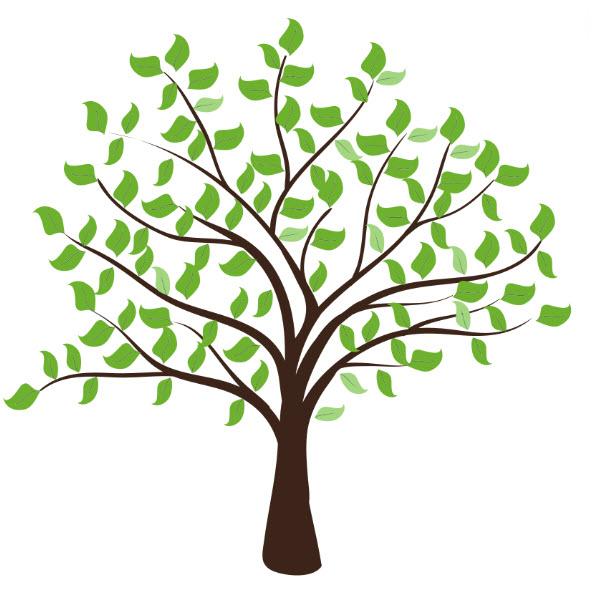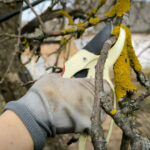
Arborist
Trees are vital to our environment, providing shade, enhancing property values, and contributing to the overall beauty of our surroundings. However, like all living things, trees require care and maintenance to thrive. This care often necessitates the expertise of professionals such as arborists, tree surgeons, and tree doctors. In this guide, we will explore the various roles these professionals play, delve into the field of arboriculture, discuss the costs and pricing of tree services, and emphasize the importance of hiring licensed and certified experts.
The Different Roles in Tree Care
Arborist: An arborist, also known as a tree arborist, is a specialist in the art and science of planting, caring for, and maintaining trees. Arborists are knowledgeable about the biological needs of trees, such as their growth patterns, soil requirements, and pest control. They are skilled in diagnosing tree diseases and structural issues and recommending appropriate treatments. Arborists also provide expert advice on tree planting and selection, ensuring that the right tree is planted in the right place for optimal growth and longevity.
Tree Surgeon: A tree surgeon focuses on the physical care of trees, such as pruning, trimming, tree removal, and stump removal or grinding. The term “surgeon” is used to describe the precision and skill required to manage and maintain the health and safety of trees. Tree surgeons perform tasks like removing dead or damaged limbs, shaping trees for aesthetic or safety reasons, and removing hazardous trees. Their work is essential in preventing property damage and ensuring public safety.
Tree Doctor: A tree doctor, often synonymous with an arborist, is a professional who diagnoses and treats tree diseases and pest infestations. Tree doctors are adept at identifying symptoms of poor tree health, prescribing treatments, and implementing measures to prevent the spread of diseases or pests. They play a crucial role in maintaining the overall health of trees in urban and rural landscapes.
Tree Arborist: A tree arborist is a comprehensive tree care professional who combines the expertise of an arborist, tree surgeon, and tree doctor. They are equipped to handle all aspects of tree care, from planting and maintenance to complex tree surgeries and disease management. Tree arborists are essential for long-term tree care strategies, ensuring that trees remain healthy, safe, and aesthetically pleasing.
Understanding Arboriculture
Arboriculture is the practice of cultivating, managing, and studying trees, shrubs, and other perennial woody plants. It involves a wide range of activities, including planting, pruning, fertilizing, pest control, disease management, and tree removal. Arboriculture is integral to maintaining the health and beauty of landscapes, urban environments, and natural ecosystems.
Arboriculturists, or those who practice arboriculture, must have a deep understanding of tree biology, ecology, and environmental factors that affect tree growth and health. They are trained in the use of specialized equipment and techniques to perform tree care tasks safely and effectively. Arboriculture also involves a commitment to sustainable practices, ensuring that tree care activities do not negatively impact the environment.
Costs and Pricing of Tree Services
The cost of tree services can vary depending on several factors, including the type of service required, the size and condition of the tree, the complexity of the job, and the location. Here is an overview of common tree services and their associated costs:
- Tree Pruning and Trimming: Regular pruning and trimming are essential for maintaining tree health and safety. The cost of pruning or trimming can range from $150 to $1,200 per tree, depending on the tree’s size, location, and the complexity of the work. Small trees are typically less expensive to prune, while larger trees require more time and specialized equipment.
- Tree Removal: Tree removal may be necessary if a tree is dead, diseased, or poses a safety risk. The cost of tree removal can vary widely, typically ranging from $400 to $3,000 or more. Factors affecting the price include the tree’s size, location (e.g., proximity to structures or power lines), and the difficulty of the removal process. Additional costs may apply for stump removal, which can range from $60 to $350 per stump.
- Stump Grinding: After a tree is removed, stump grinding is often necessary to eliminate the remaining stump. The cost of stump grinding typically ranges from $100 to $400, depending on the size and accessibility of the stump. Grinding stumps is important for preventing regrowth and removing potential hazards from the landscape.
- Tree Health Assessment and Treatment: Diagnosing and treating tree diseases or pests often requires the expertise of a tree doctor or arborist. The cost of a tree health assessment can range from $100 to $500, depending on the scope of the evaluation and the treatments recommended. Treatments, such as fertilization, pesticide application, or cabling and bracing, may incur additional costs.
- Emergency Tree Services: Emergency tree services are often required after storms or other events that cause significant damage to trees. These services are typically more expensive due to the urgency and potential hazards involved. Costs for emergency tree removal or trimming can range from $500 to $5,000 or more, depending on the severity of the situation.
- Tree Planting: Planting new trees is an investment in the future health and beauty of a landscape. The cost of tree planting can vary based on the species of tree, the size of the tree at planting, and site preparation requirements. Typically, tree planting costs range from $150 to $1,000 per tree.
The Importance of Licensing and Certification
When hiring a tree service professional, it’s essential to ensure that they are licensed and certified. Licensing and certification demonstrate that the individual or company has met specific standards of competence and professionalism in the field of arboriculture.
Licensed: A licensed tree service provider has met the legal requirements set by local or state authorities to operate a business in the tree care industry. Licensing requirements vary by region but often include proof of insurance, bonding, and compliance with safety regulations. Hiring a licensed professional ensures that the service provider is accountable and adheres to industry standards.
Certified: Certification is a voluntary credential that indicates a tree service professional has undergone specialized training and has demonstrated a high level of expertise in arboriculture. The International Society of Arboriculture (ISA) is a widely recognized organization that offers certification for arborists. An ISA Certified Arborist has passed a comprehensive exam covering tree biology, maintenance practices, diagnosis, and treatment. Hiring a certified arborist ensures that you are working with someone who is knowledgeable and committed to ongoing education and best practices in tree care.
Local Considerations and Choosing the Right Tree Service
When selecting a tree service provider, it’s essential to consider local factors such as climate, soil conditions, and the types of trees common in your area. Local arborists and tree surgeons are often more familiar with regional tree species and the specific challenges they face, such as pests or diseases prevalent in the area.
To find the right tree service provider, consider the following steps:
- Research and Reviews: Look for local tree service companies with positive reviews and testimonials. Online platforms like Yelp, Google, and the Better Business Bureau can provide valuable insights into the reputation and quality of service of different providers.
- Get Multiple Quotes: Obtain quotes from several tree service providers to compare pricing and services. Be sure to ask for a detailed breakdown of costs and inquire about any potential additional charges.
- Check Credentials: Verify that the tree service provider is licensed and insured. Ask about their certification, experience, and training. A reputable company will be transparent about its qualifications and provide proof upon request.
- Ask for References: Request references from past clients to gauge the quality of work and customer satisfaction. Contact these references to ask about their experience with the company and whether they would recommend their services.
- Understand the Contract: Before hiring a tree service provider, carefully review the contract to ensure it includes all agreed-upon services, costs, and timelines. Make sure you understand the terms and conditions, including any warranties or guarantees offered.
Conclusion
Tree services and arboriculture are essential for maintaining the health, safety, and beauty of our landscapes. Whether you need routine tree maintenance, emergency tree removal, or specialized tree health care, hiring licensed and certified professionals is crucial for ensuring the job is done safely and effectively. By understanding the roles of arborists, tree surgeons, and tree doctors, as well as the costs and considerations involved, you can make informed decisions that protect your property and enhance the natural environment. See more information about our services.


